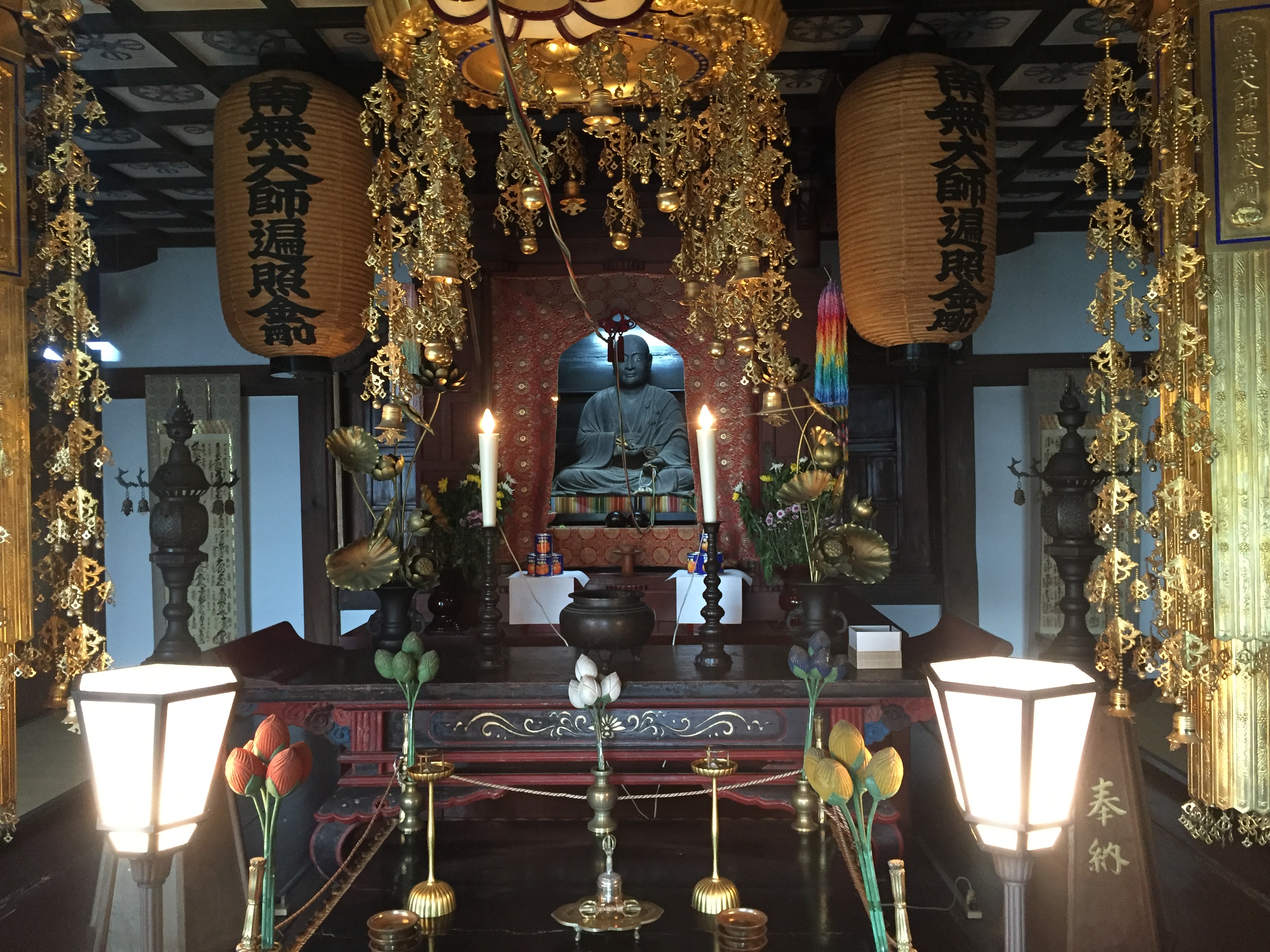Daishō-in (Miyajima) on:
[Wikipedia]
[Google]
[Amazon]




 is a historic Japanese temple complex with many temples and statues on
is a historic Japanese temple complex with many temples and statues on
Daisyō-in
in Japanese)
Buddhist temples in Hiroshima Prefecture Religious buildings and structures completed in 806 9th-century establishments in Japan {{Buddhist-temple-stub




 is a historic Japanese temple complex with many temples and statues on
is a historic Japanese temple complex with many temples and statues on Mount Misen
is the sacred mountain on Itsukushima in Hatsukaichi, Hiroshima, Japan, and is the highest mountain on the island at 535 m; it is situated within the World Heritage area of Itsukushima Shrine.
The sea around the island (Seto Inland Sea) and all ...
, the holy mountain on the island of Itsukushima, off the coast of Hatsukaichi, Hiroshima, Japan
Japan ( ja, 日本, or , and formally , ''Nihonkoku'') is an island country in East Asia. It is situated in the northwest Pacific Ocean, and is bordered on the west by the Sea of Japan, while extending from the Sea of Okhotsk in the north ...
. It is the 14th temple in the Chūgoku 33 Kannon Pilgrimage
The is one of a number of traditional Buddhist pilgrimage routes in Japan. The route includes 33 sites sacred to the boddhisattva Kannon, across the Chūgoku region ( Okayama, Hiroshima, Yamaguchi, Shimane and Tottori prefectures). The 33 Kanno ...
and famous for the maple trees and their autumn colors. It is also called . Including Mt. Misen, Daishō-in is within the World Heritage Area of Itsukushima Shrine
is a Shinto jinja (shrine), shrine on the island of Itsukushima (popularly known as Miyajima, Hiroshima, Miyajima), best known for its "floating" ''torii'' gate.Louis-Frédéric, Nussbaum, Louis-Frédéric (2005)"''Itsukushima-jinja''"in ''Japa ...
.
In this temple there is a flame which is said to have been burning since its foundation, for more than 1200 years.
History
*Daishō-in was founded by the monk Kūkai, also known posthumously as , in the year 806, the 1st year of the Daidō era. :Kūkai was one of the most famous monks in Japan and the founder of Shingon Buddhism. :Made head temple of one of denomination of Shingon Buddhism and the oldest temple on Itsukushima. *By an Imperial order of Emperor Toba, it was the place to pray for the peace and security of the nation. *Emperor Meiji
, also called or , was the 122nd emperor of Japan according to the traditional order of succession. Reigning from 13 February 1867 to his death, he was the first monarch of the Empire of Japan and presided over the Meiji era. He was the figur ...
stayed there on July 31, 1885, for his visit to Itsukushima Shrine
is a Shinto jinja (shrine), shrine on the island of Itsukushima (popularly known as Miyajima, Hiroshima, Miyajima), best known for its "floating" ''torii'' gate.Louis-Frédéric, Nussbaum, Louis-Frédéric (2005)"''Itsukushima-jinja''"in ''Japa ...
.
*Repair work for the trail to Mt. Misen was finished in 1905.
:It was done by the donation of Itō Hirobumi.
*Heavy damage by 19th typhoon on September 27, 1991.
*Held a memorial service to congratulate the restoration of the damage on October 10, 1998.
*The 14th Dalai Lama
The 14th Dalai Lama (spiritual name Jetsun Jamphel Ngawang Lobsang Yeshe Tenzin Gyatso, known as Tenzin Gyatso (Tibetan: བསྟན་འཛིན་རྒྱ་མཚོ་, Wylie: ''bsTan-'dzin rgya-mtsho''); né Lhamo Thondup), known as ...
visited Itsukushima to celebrate the 1200th-year of Daishō-in from 3 to 8 November 2006.
There are also many buildings, gates of the temple and many statues of Kannon, Jūichimen Kannon, Fudō-myōō (Acala) and Seven Lucky Gods on and around Mt. Misen.
The temple was the administrator of the Itsukushima shrine before Meiji Restoration forbade (Shinbutsu bunri
The Japanese term indicates the separation of Shinto from Buddhism, introduced after the Meiji Restoration which separated Shinto ''kami'' from buddhas, and also Buddhist temples from Shinto shrines, which were originally amalgamated. It is a ...
) syncretism (Shinbutsu-shūgō
''Shinbutsu-shūgō'' (, "syncretism of kami and buddhas"), also called Shinbutsu shū (, "god buddha school") Shinbutsu-konkō (, "jumbling up" or "contamination of kami and buddhas"), is the syncretism of Shinto and Buddhism that was Japan's o ...
) between Shinto and Buddhism in 1868.Miyajima Misen Daiso-In Temple, Official Publication, http://www.galilei.ne.jp/daisyoin/
Events
See also
* Itsukushima * Kūkai * Shingon Buddhism * Kannon *Chūgoku 33 Kannon Pilgrimage
The is one of a number of traditional Buddhist pilgrimage routes in Japan. The route includes 33 sites sacred to the boddhisattva Kannon, across the Chūgoku region ( Okayama, Hiroshima, Yamaguchi, Shimane and Tottori prefectures). The 33 Kanno ...
* Mt. Misen
*Acala
or Achala ( sa, अचल, "The Immovable", ), also known as (, "Immovable Lord") or (, "Noble Immovable Lord"), is a wrathful deity and ''dharmapala'' (protector of the Dharma) prominent in Vajrayana Buddhism and East Asian Buddhism., Jp. re ...
* Seven Lucky Gods
* Glossary of Japanese Buddhism
References
External links
Daisyō-in
in Japanese)
Buddhist temples in Hiroshima Prefecture Religious buildings and structures completed in 806 9th-century establishments in Japan {{Buddhist-temple-stub